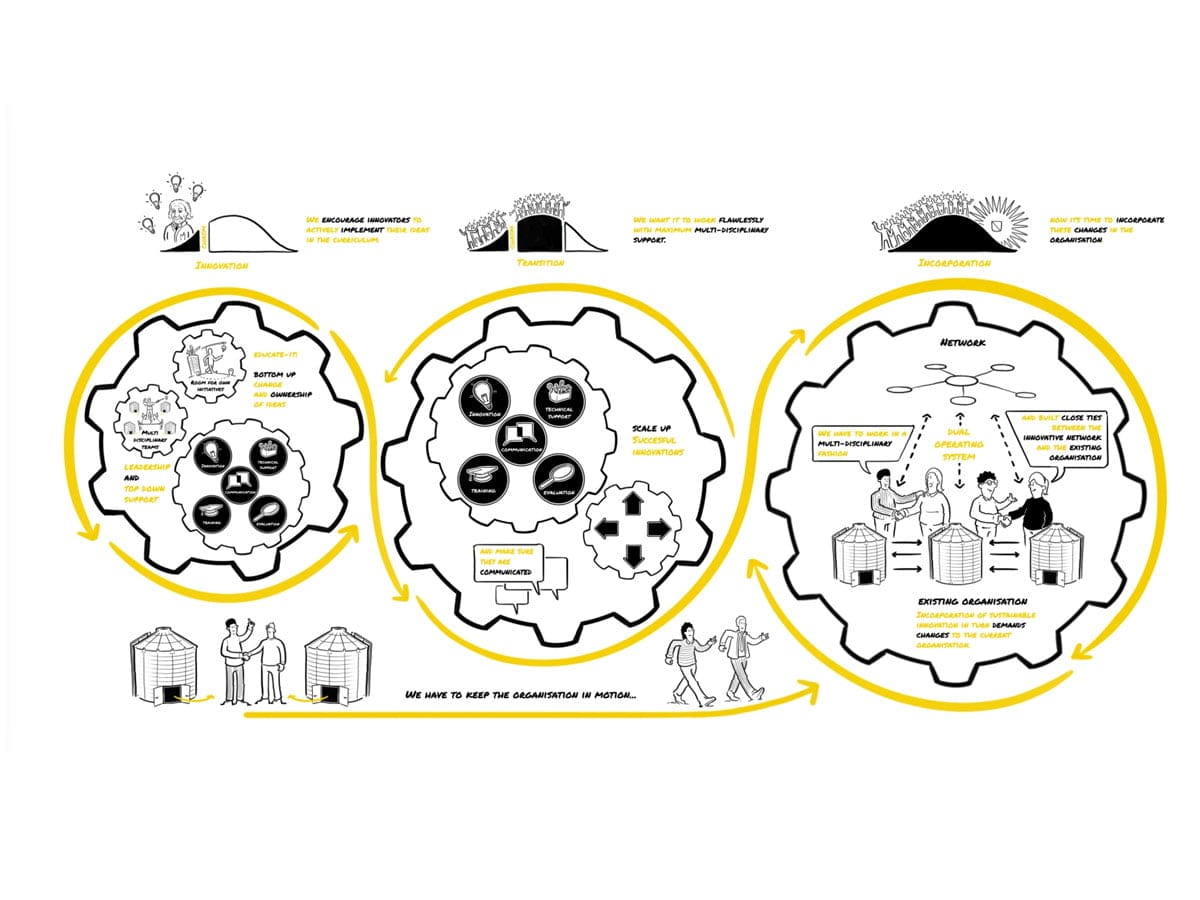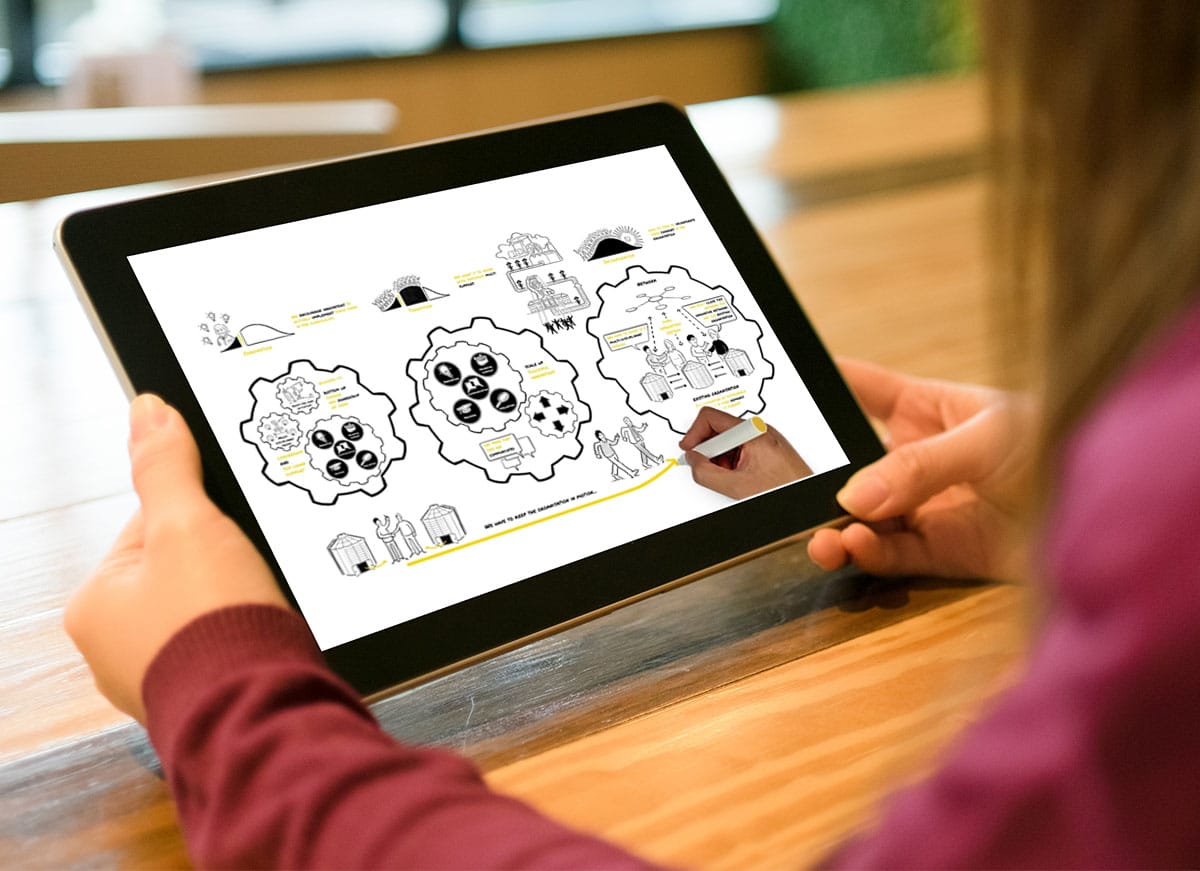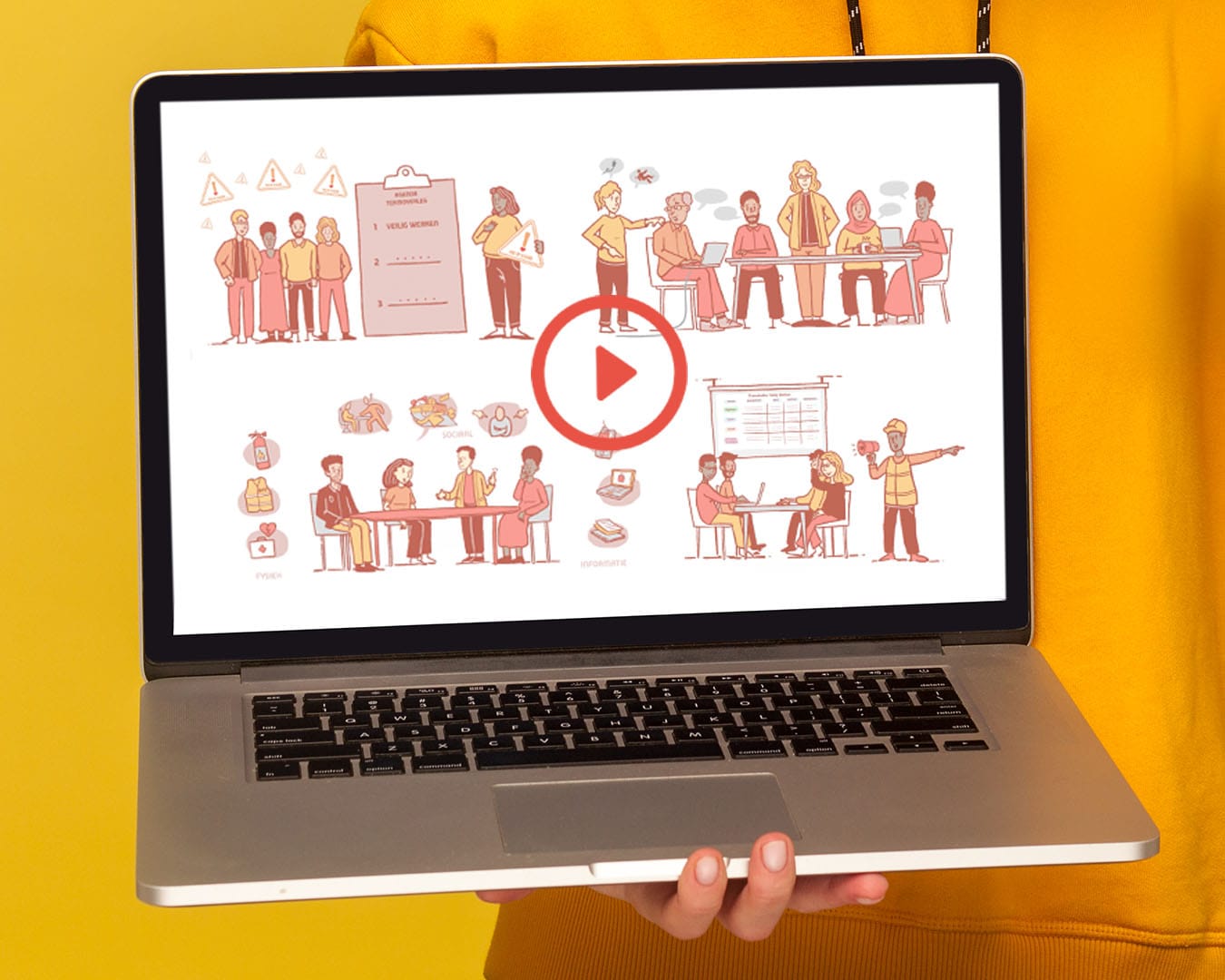Whiteboard Animatie voor de Universiteit Utrecht.
Bekijk hier de animatie.
Whiteboard animatie.
Om dit verhaal ook te kunnen delen zonder dat er altijd een spreker naast de praatplaat moest staan is een handgetekende animatie gemaakt. Met een passende voiceover werd de taak van de presentator ingevuld. Via de online media kanalen van de universiteit is het verhaal nu voor een groot publiek, altijd inzichtelijk.
Van animatie naar praatplaat.
De gemaakte tekeningen zijn breder inzetbaar dan alleen de animatie, en kunnen vaak goed hergebruikt worden in presentaties of op een website. Bekijk hiernaast de illustraties die in de animatie gebruikt zijn.
Intro
The world is in permanent transition. The past few decades have seen revolutions in the organisational, industrial, and educational arenas.
These changes don’t always move at the same speed: technology and industry have developed rapidly, but education has lagged behind.
At top-down hierarchical educational institutions, experienced lecturers have less autonomy, but a sense of autonomy is vital in educators’ willingness to implement changes in their curriculum.
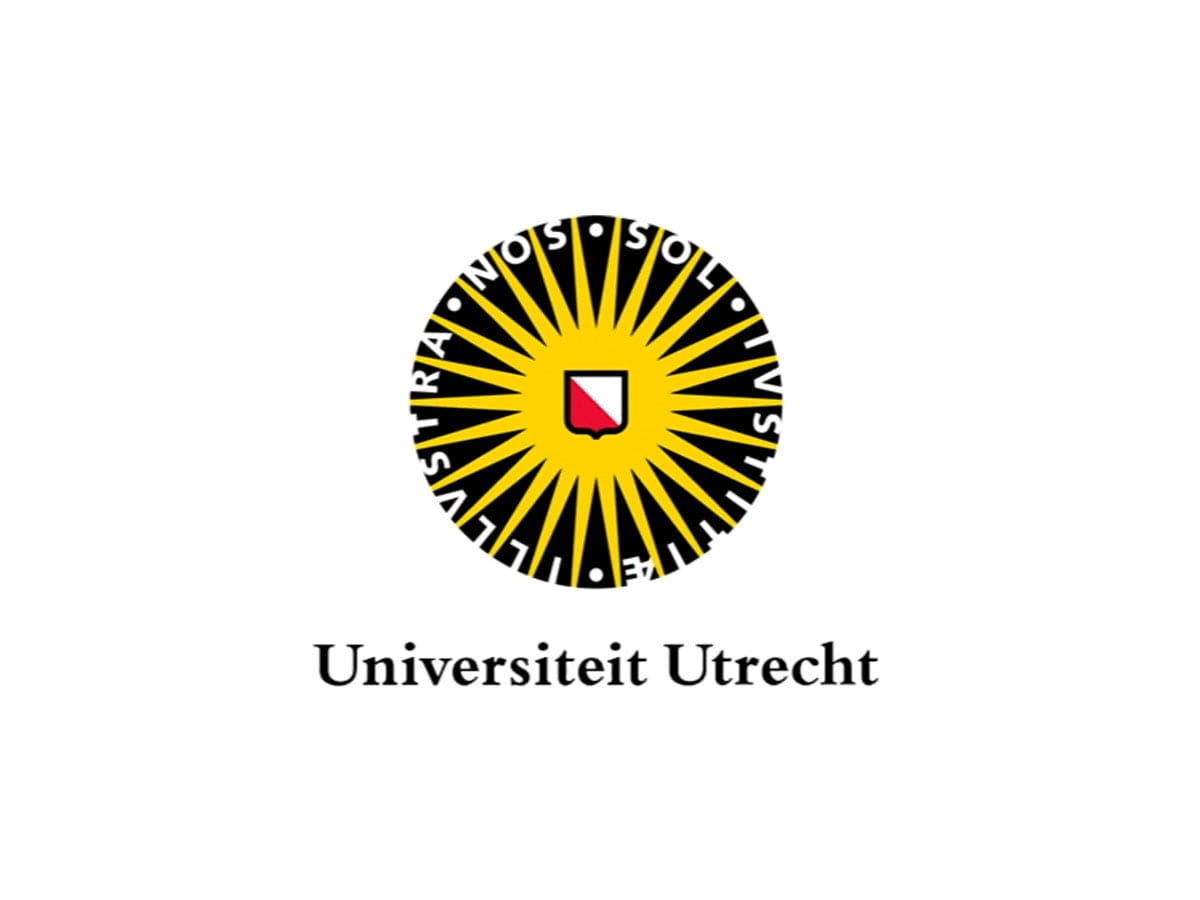
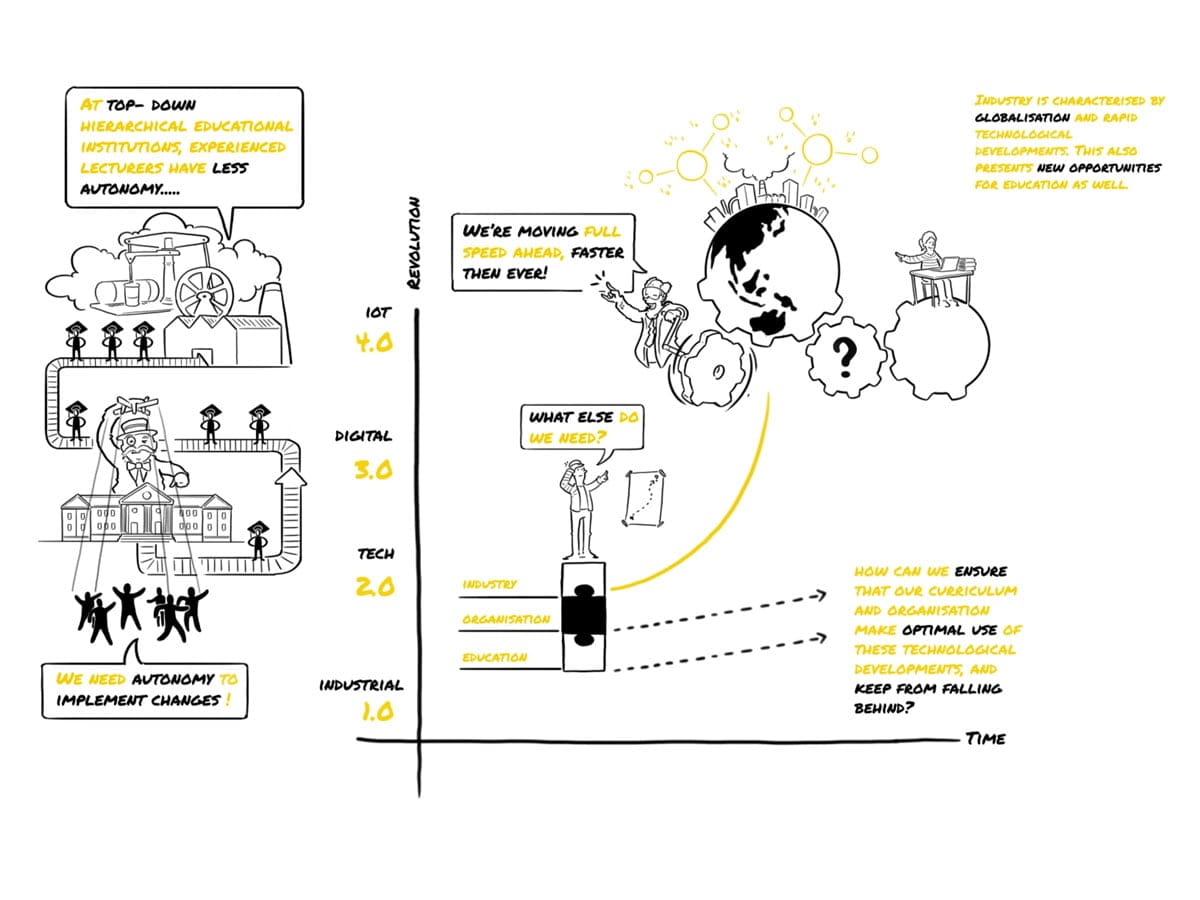
Needs
Industry is characterised by globalisation and rapid technological developments.
This presents new opportunities for education as well.
But how can we as a university ensure that our curriculum and organisation make optimal use of these technological developments, and keep from falling behind?
What else do we need?
Educate-it
Utrecht University’s educational innovation programme Educate-it encourages bottom-up changes in education by delegating ownership of education where it belongs: to the teachers.
A multi-disciplinary team working across and with the full breadth of the university provides maximum support for the realisation of their ideas.
Leadership with a high degree of autonomy at low levels of the organisation, combined with streamlined university processes, result in an enduring willingness to change.
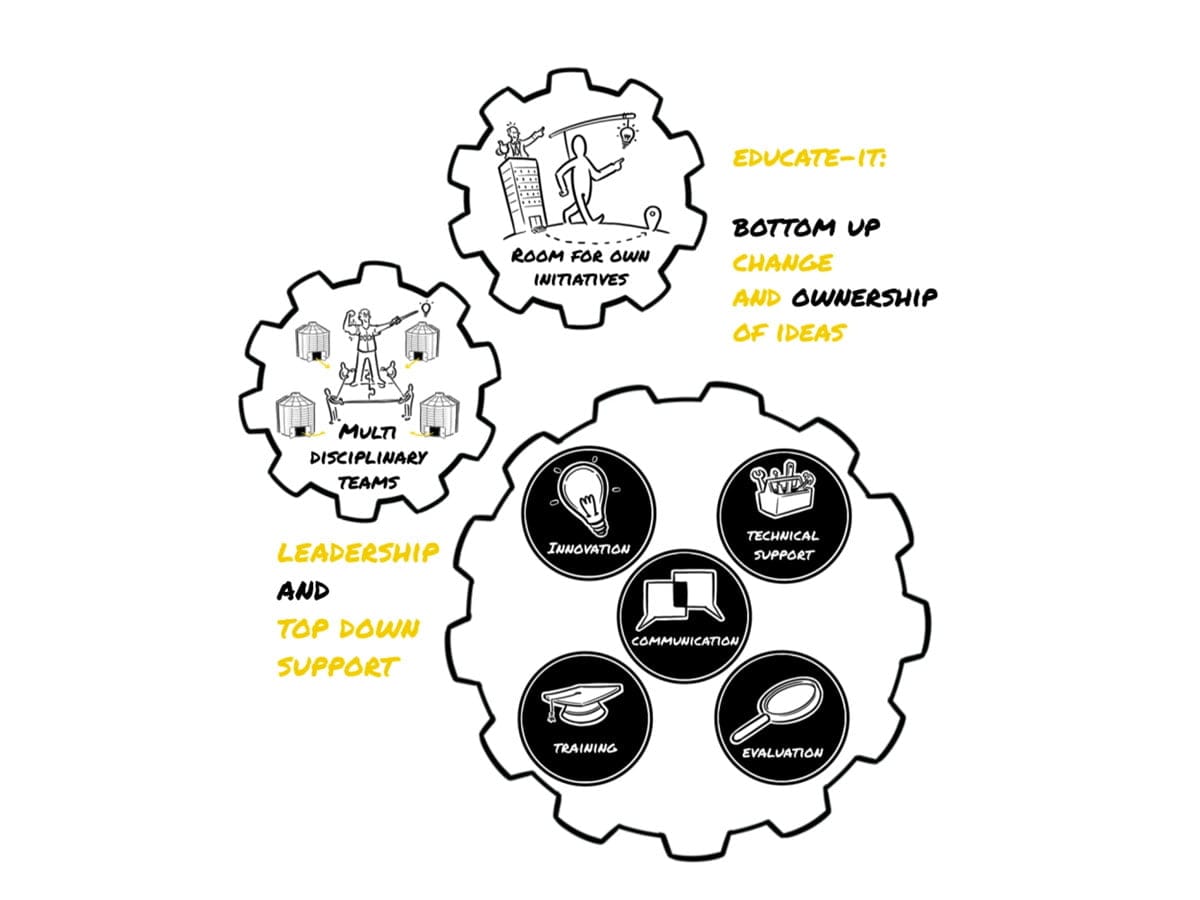
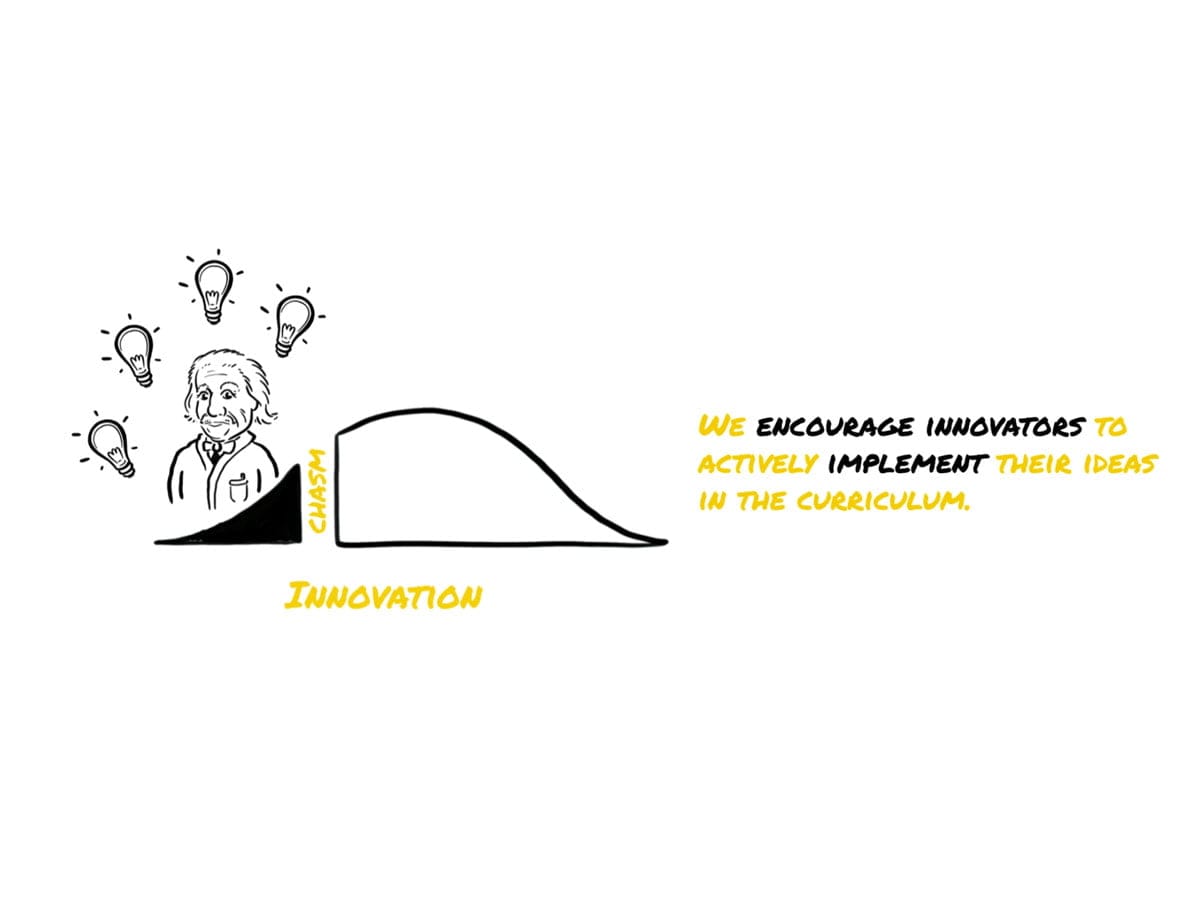
Innovators
To encourage innovation, Educate-it invites the ‘innovators’ – a group of lecturers who enjoy experimenting with new ideas – to actively integrate theirs in the curriculum.
They receive support from a multi-disciplinary team that has the educational, practical, and technical knowledge needed to quickly realise their experiments.
The speed and results of these experiments are vital in order to inspire new lecturers.
Scale-up
It is important that the successful innovations can be scaled up and communicated to the rest of the lecturers.
For the majority, it’s important that everything works flawlessly and that maximal multi-disciplinary support is provided. Once they feel comfortable, momentum will build.
In this phase, the organisation will also make preparations to be able to incorporate the changes.
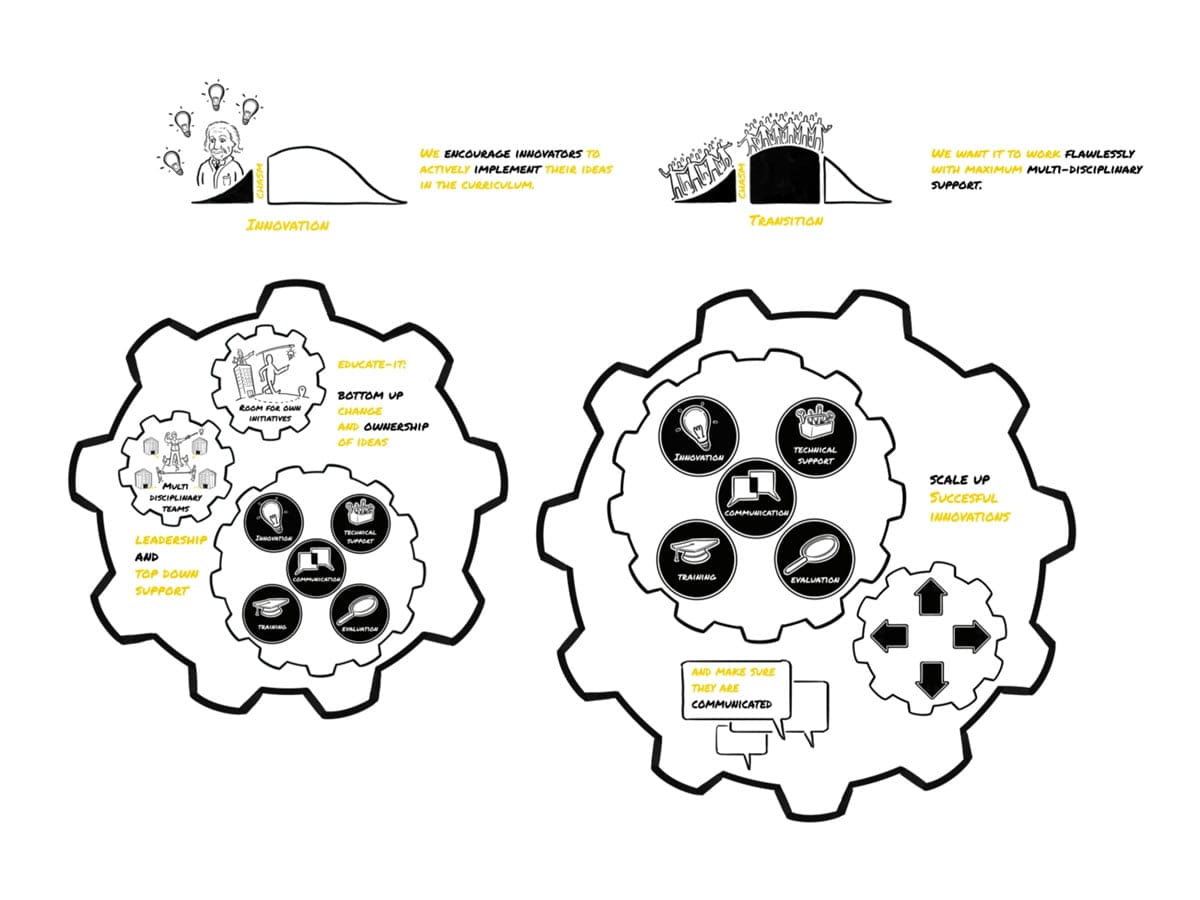
Cyclus
In order to keep up with technological developments, it is important to keep the organisation in motion and to embed innovation sustainably.
Sustainable innovation is a cyclical process: innovation – transition – incorporation.

Multi disciplinary
Incorporation of sustainable innovation in turn demands changes to the current organisation.
In the analogy of Kotter’s Dual Operating System, the network of self-managing teams and chains of work processes that Educate-it has created will have collaborate closely with the existing organisation and services.
That means the organisation will have to work in a more multi-disciplinary fashion.

Outro
In this sustainable education innovation model, the innovators will constantly produce new ideas for use by the majority, resulting in a permanent renewal of education.
The recognition of teachers autonomy, awareness of the chasm in Rogers innovation curve and building close ties between the innovative network and the existing organisation will result in a continuous and fluid transition from innovation to incorporation: The Sustainable Innovation Model.
